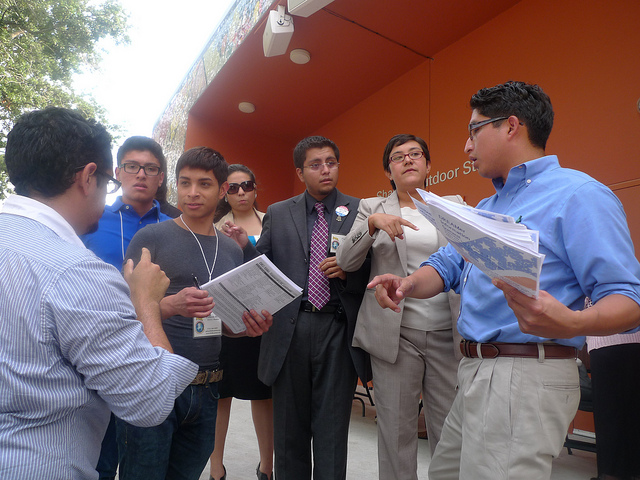 It hasn’t even been a month since the United States Citizenship and Immigration Services (USCIS) first started accepting requests for deferred action under its Deferred Action for Childhood Arrivals (DACA) initiative, yet the New York Times reported this week that the first approvals are already on their way. The Times also reported that the agency has received 72,000 applications as of September 11—almost double the 40,000 reported in the Wall Street Journal just the day before. That’s not bad at all for a program that was only announced three months ago and put into place by the government in 60 days.
It hasn’t even been a month since the United States Citizenship and Immigration Services (USCIS) first started accepting requests for deferred action under its Deferred Action for Childhood Arrivals (DACA) initiative, yet the New York Times reported this week that the first approvals are already on their way. The Times also reported that the agency has received 72,000 applications as of September 11—almost double the 40,000 reported in the Wall Street Journal just the day before. That’s not bad at all for a program that was only announced three months ago and put into place by the government in 60 days.
72,000 applicants in just a month is not particularly surprising. In fact, given the large pool of those immediately eligible to apply—approximately 940,000 people—it’s likely that the daily receipt totals will continue to rise. Given the announcement that the first grants of DACA have gone out this week, that number will likely rise even faster. Common wisdom among immigration veterans is that once people see that others have made it successfully through the program, it will increase confidence in their own chances of success.
Some have suggested that the numbers are disappointingly low, given the initial groundswell of interest in the program, but these things take time. Any number of barriers can contribute to delays in applying. In some cases, it can be fear or lack of knowledge. For others, the costs of applying are high— in this case $465—as USCIS, by law, must recover its processing costs through application fees. It also takes time to gather up the materials necessary to prove physical presence (a requirement of the initiative). As with any application (a personal loan, refinancing a mortgage, a passport) finding all the missing paperwork can slow down the process.
With DACA, as the Times and Wall Street Journal both noted, some people are holding off, waiting to see whether there will be a change in administration (and potentially a change in policy). But that trepidation seems to be outweighed by the intense and enthusiastic commitment of many of the DREAMers. For instance, significant resources have already been poured into WeOwnTheDream.com, a new website that allows potential DACA applicants to walk through eligibility requirements and helps them find clinics, workshops and attorneys nearby who can help with the process.
Similarly, many immigrant services organizations are encouraging qualified applicants to apply, given the promise of a two year deferral and work authorization. Most legal experts assume that it would be unlikely for those who receive deferred action to have it revoked simply because of a change in administration. In fact, from a government resources perspective, it would probably be more costly to revoke existing grants than to simply allow them to expire over time.
Ironically, one of the reasons young people aren’t submitting DACA applications may be because they have other, more permanent forms of relief available to them. Attorneys and workshop leaders have also reported that they are finding that many young people who come forward may have family relationships that qualify them for some other form of immigrant status. Running down those leads and seeing if they bear fruit can take a lot of time, as well.
This is telling, as it suggests something that those who work in immigration know all too well: every case really is different, and every story has an arc all its own. The DACA story is still too new to have an arc, let alone be judged a disappointment.
Photo by Neighborhood Centers
FILED UNDER: Children, DACA, Deferred Action, Department of Homeland Security, Immigration Law, Students, undocumented immigration, USCIS


